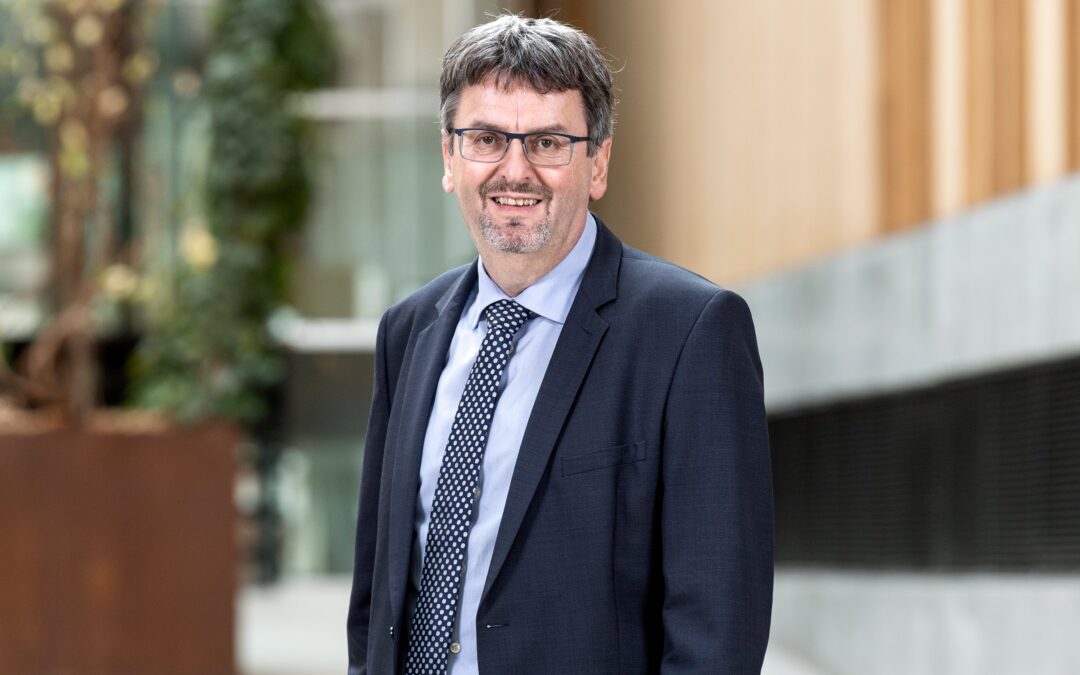The Federal Office of Transport (FOT) promotes the sustainable development of freight transport and the efficient interaction of all modes of transport within the framework of Swiss policy. It is responsible for licensing, financing and safety supervision in rail transport, cableways and chairlifts, buses and shipping. Thanks to favourable framework conditions, it should be possible to operate rail freight services on a self-financing basis. In addition, the federal government can grant investment contributions for technical innovations in rail freight transport. The FOT controls and checks the subsidy payments in freight transport within the framework of a controlling system. Dr Peter Füglistaler has been Director of the FOT since 2010. Before joining the FOT, Peter Füglistaler held various positions at the Swiss Federal Railways (SBB). In an interview with the VAP he answers questions about rail freight transport.
VAP: Mr Füglistaler, SBB Cargo does not seem to be coming out of restructuring/subsidy mode. At the same time, federal finances are very tight. Can rail freight customers sleep easy, will SBB Cargo be able to turn the corner?
Dr Peter Füglistaler: The Confederation has made it clear that it wants to develop freight transport further – taking into account energy and climate policy goals and in the knowledge of the great importance of rail transport for Switzerland’s security of supply. The Federal Council is also prepared to modernise rail freight transport technically and organisationally and proposes targeted financial support for this purpose. Nevertheless, it is important that shippers also play their part in shaping the future.
The sugar beet contract was lost, Coop successfully runs its own RU, now also in the WLV system. Gravel companies are building up their own EVU. How do you assess this market development from the owner’s point of view?
I can only speak here as the director of the financing and supervisory authority. In principle, I welcome it when the market plays and new market participants seize their opportunity. SBB Cargo, for example, also has to assert itself in the market and look at its own economic viability.
The pressure to settle, keyword “Major Accidents Ordinance”, has an impact on the transport of dangerous goods. What is the FOT doing to ensure that dangerous goods transports continue to be possible within the existing framework in order to secure self-sufficiency and safeguard Switzerland as an industrial location?
The FOT regularly reviews the risks of dangerous goods transports and, if necessary, implements measures at an early stage in dialogue with the parties involved. A good example is the joint declaration by industry, transport companies and authorities on risk reduction in the transport of chlorine. Such early recognition and joint action makes it possible to continue transporting dangerous goods safely by rail.
While Europe focuses on the DAK, SBB is more interested in the AK – without the D. Is this also your perception and would you support this position of SBB?
I don’t see this separation at SBB at all. Like BAV, VAP and VöV, SBB is of the opinion that digital functions are needed to make rail freight transport safer, faster, more flexible and thus more reliable and cheaper. With the support of the FOT, SBB Cargo has set up a test train to test and optimise the power supply and data transmission in goods trains. The results are being incorporated into the work at European level, where SBB is actively involved, as are all the other railways in Europe. Switzerland will not be making any extra moves as far as digital automatic coupling is concerned. However, we will not be able to wait if the work in Europe is delayed. Because by waiting, we risk the achievement of nationwide rail freight transport. As soon as the technical specifications in the TSI standards are fixed, we want to start.
There are many calls for the industry to speak with one language. Now the industry has jointly realised the “Vision 2050”, but unfortunately this was not reflected in the design of the consultation for nationwide rail freight transport. Was the voice too quiet? What is the FOT’s expectation?
The vision was drawn up by the FOT’s accompanying group for the further development of freight transport by rail. The most important associations and players in Swiss rail freight transport are represented there. But the thing is: despite this vision, the associations have expressed very heterogeneous ideas and in some cases not very realistic wish lists for the future of Swiss rail freight transport as part of their statements on the consultation process.
How would you describe the VAP?
The VAP is an important voice in the Swiss freight transport industry, which in turn is existential for the country’s security of supply.
What strengths do you attribute to the VAP?
The VAP has its strengths in bundling the interests of the players and in its good relations with the political decision-makers.
What else would you like to see from the VAP?
In the future it will be important to present the interests of the shipping industry even more pointedly to the outside world. The VAP can strengthen its position in this respect.
To whom would you recommend cooperation with the VAP?
Rail freight transport does not work without sidings and freight wagons. That is why cooperation with the VAP is recommended to everyone who wants to operate rail freight transport successfully.
Dr Füglistaler, thank you for the interesting interview.
